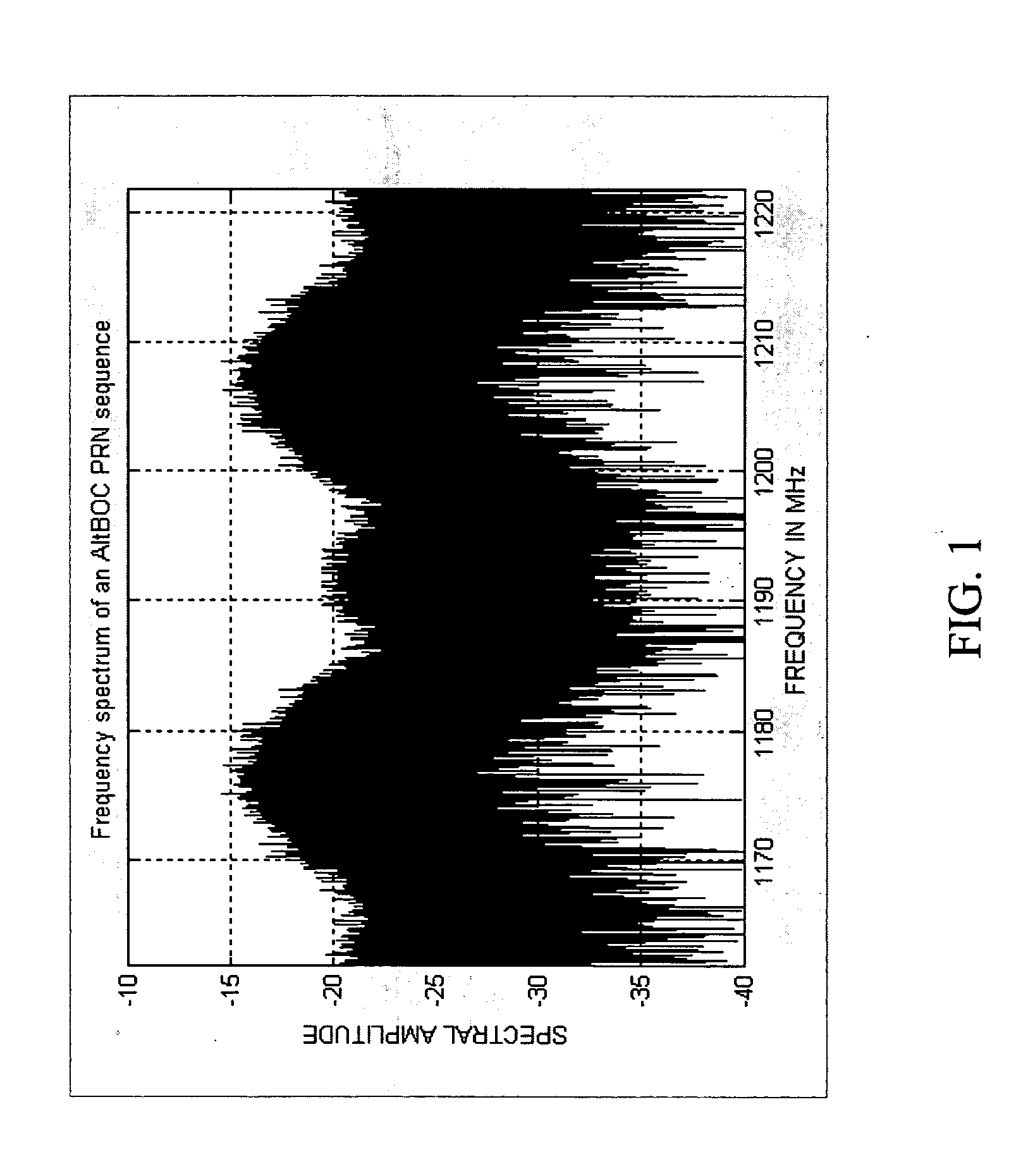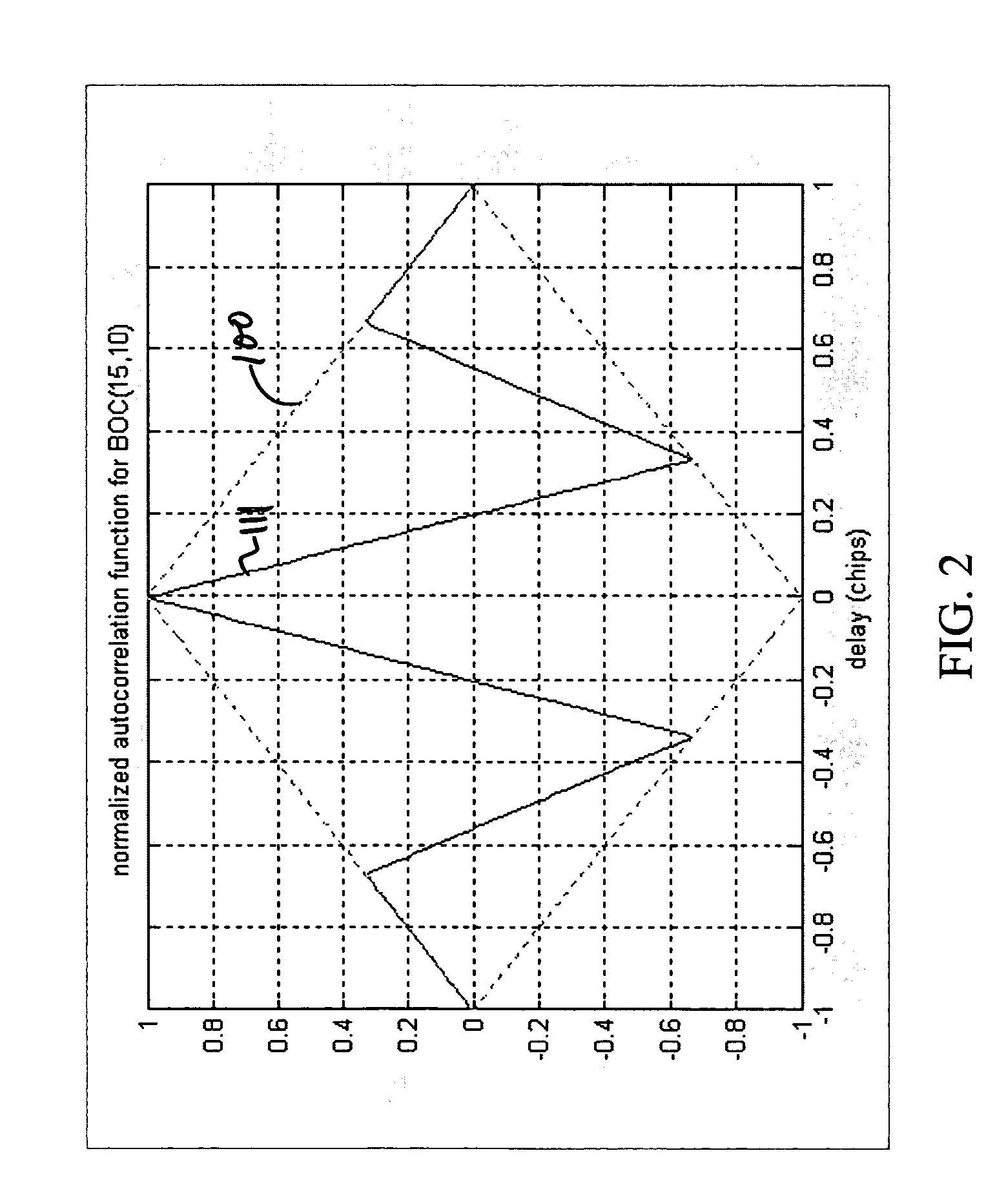Hardware architecture for processing galileo alternate binary offset carrier (altboc) signals
a hardware architecture and receiver technology, applied in the field of gnss receivers, can solve the problems of dll not being able to lock to the satellite prn code, the delay spacing cannot be so narrow, and the distortion of the received signal adversely affecting code synchronization operations
- Summary
- Abstract
- Description
- Claims
- Application Information
AI Technical Summary
Benefits of technology
Problems solved by technology
Method used
Image
Examples
Embodiment Construction
The Galileo AltBOC modulation scheme generates an AltBOC (15,10) signal that is a “BOC (15,10)-like” signal with the E5a and E5b bands having their own respective spreading, or PRN, codes on their in-phase and quadrature carriers. The AltBOC (15,10) signal has a center carrier frequency of 1191.795 HMz and a subcarrier frequency of 15.345 MHz, with the E5a band (1176.45 MHz) as the lower sideband and the E5b band (1207.14 MHz) as the upper sideband.
The AltBOC (15,10) signal is generated on the satellite as a constant envelope signal that includes on the in-phase channel a composite of the E5a and E5b spreading, or PRN, codes and data, on the quadrature channel and a composite of the E5a and E5b dataless PRN, or pilot, codes. FIG. 1 depicts the frequency spectrum of an AltBOC PRN quadrature channel sequence.
The idealized normalized autocorrelation function for the AltBOC (15,10) signal is shown in FIG. 2. The envelope 100 of the autocorrelation function 111 is the autocorrelatio...
PUM
 Login to View More
Login to View More Abstract
Description
Claims
Application Information
 Login to View More
Login to View More - R&D
- Intellectual Property
- Life Sciences
- Materials
- Tech Scout
- Unparalleled Data Quality
- Higher Quality Content
- 60% Fewer Hallucinations
Browse by: Latest US Patents, China's latest patents, Technical Efficacy Thesaurus, Application Domain, Technology Topic, Popular Technical Reports.
© 2025 PatSnap. All rights reserved.Legal|Privacy policy|Modern Slavery Act Transparency Statement|Sitemap|About US| Contact US: help@patsnap.com



